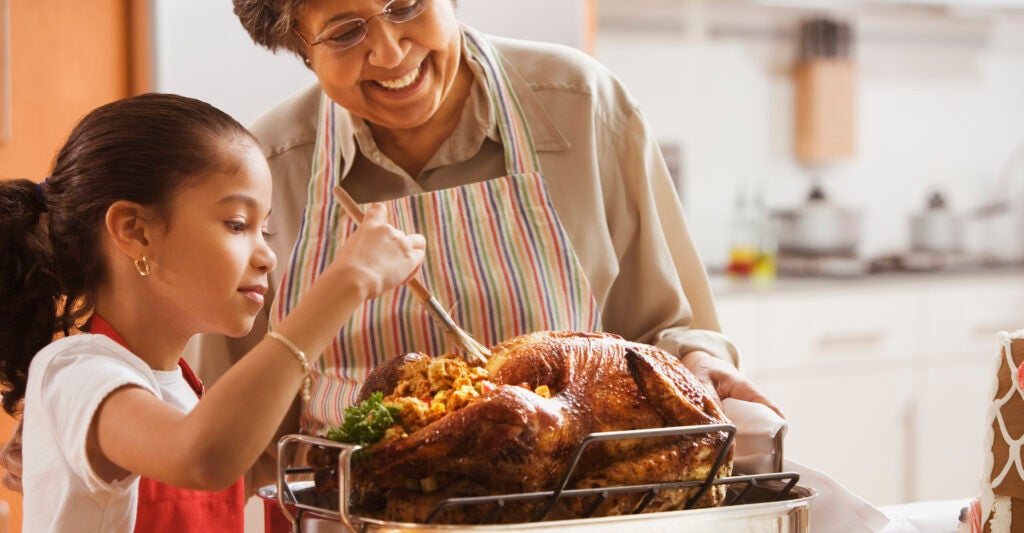Even in this dreadful year, there is much for which to be thankful.
For example, clinical medicine during the COVID-19 pandemic has continued to advance at a breathtaking pace, with not one, but two different vaccine approvals expected in the coming days, and numerous drugs, both old and new, being found to have a positive effect on the disease course of this virus.
Furthermore, new advances in testing have enabled us as a country routinely to record more than 1.5 million tests each day, with capacity expected only to expand.
>>> What’s the best way for America to reopen and return to business? The National Coronavirus Recovery Commission, a project of The Heritage Foundation, assembled America’s top thinkers to figure that out. So far, it has made more than 260 recommendations. Learn more here.
We should give thanks for the hard work and ingenuity of those who are developing these advances. We should also be thankful for the bravery and determination of every health care worker who has fought on the front line of this pandemic since the beginning.
We have much to be thankful for, and Americans should be free to decide how they give thanks this Thanksgiving—including gathering with friends and family.
Still, we are in the midst of a tremendous spike in infections of this serious disease. This holiday season—be careful. Understand the risks, and the fact that COVID-19 is an extremely contagious and potentially deadly disease. Take responsibility for yourself and for others around you and do not be cavalier about this virus as you celebrate the holidays.
That is, if the lawmakers will let us.
Several states have decided to impose restrictions on Thanksgiving holiday gatherings that will prohibit families from visiting one another.
California has published a series of recommendations and mandatory requirements for gatherings—for instance, gatherings of more than three households are “strongly discouraged,” or even prohibited, depending on where you live.
Vermont and Washington have gone so far as to prohibit any gatherings that include more than one household. In Philadelphia, even outdoor gatherings are banned.
These mandates are bad policy, and the policymakers need to choose a better path.
Whether one household or 10, if no one there has an active infection, there will be exactly zero transmission. The problem, of course, is asymptomatic or pre-symptomatic spread, the likelihood of which would be proportional to the number of new cases in the community—and we are in the midst of spike. Does it make sense then to pursue harsh mandated restrictions rather than informed decision-making?
If we follow the science, as so many policymakers claim we must, the answer to that is “no.” A blanket restriction on holiday gatherings is, by nature, untargeted and cannot account for unique situations.
For instance, a group of students in college hosting a “Friendsgiving” gathering faces very little risk from COVID-19, even if an attendee has an active infection. The risk of death, according to the Centers for Disease Control and Prevention, to the typical college-age adult, as compared to someone 85 years or older, is measured in the tenths of a single percentage point.
Consider: This hypothetical gathering of young adults may have occurred so as to celebrate Thanksgiving without returning home specifically to protect their elders to avoidable exposure. If COVID-19 happens to spread during this feast, the chances of recovery are somewhere between 99.98% and 99.997%, according to the best estimates of the Centers for Disease Control and Prevention.
Would it be the right thing to do to prohibit this gathering?
On the other hand, if a grandparent, or great-grandparent, wishes to enjoy her remaining years, should it not be up to her and her family to assess the risks, decide what works for them, and take precautions as they deem necessary?
If a family plans to take mitigation steps—such as, for example, testing everyone and isolating before traveling to visit one another in ways that have them interact with no one else—is it still right to deny this family the visit?
Despite these considerations, some governors and mayors are choosing a path that substitutes informed decision-making. And the Food and Drug Administration and the Centers for Disease Control and Prevention are not helping by making it harder for people to test for COVID-19 from their home and by making it harder to understand who should get tested and what to do with their results.
By now, the science is quite clear on who exactly is at the greatest risk due to COVID-19. The goals of public health measures should therefore be to inform Americans on risks and mitigation, and motivate and equip them to consider them as they act—not impose sweeping mandates on Americans.
COVID-19 remains a real danger, and its infectiousness means that even those of us at low risk need to be careful, lest we inadvertently spread it to others who are at high risk.
There are many ways to avoid contagion, such as testing and isolating, having outdoor events where possible, gathering in smaller groups, and connecting virtually to protect elders from exposure, or any number of other creative measures. This should be up to you and your family, not the government.
So if you’ve considered the risks, taken precautions, and have family agreement, go and enjoy your turkey in ways that take into account the realities of the times we live in.
